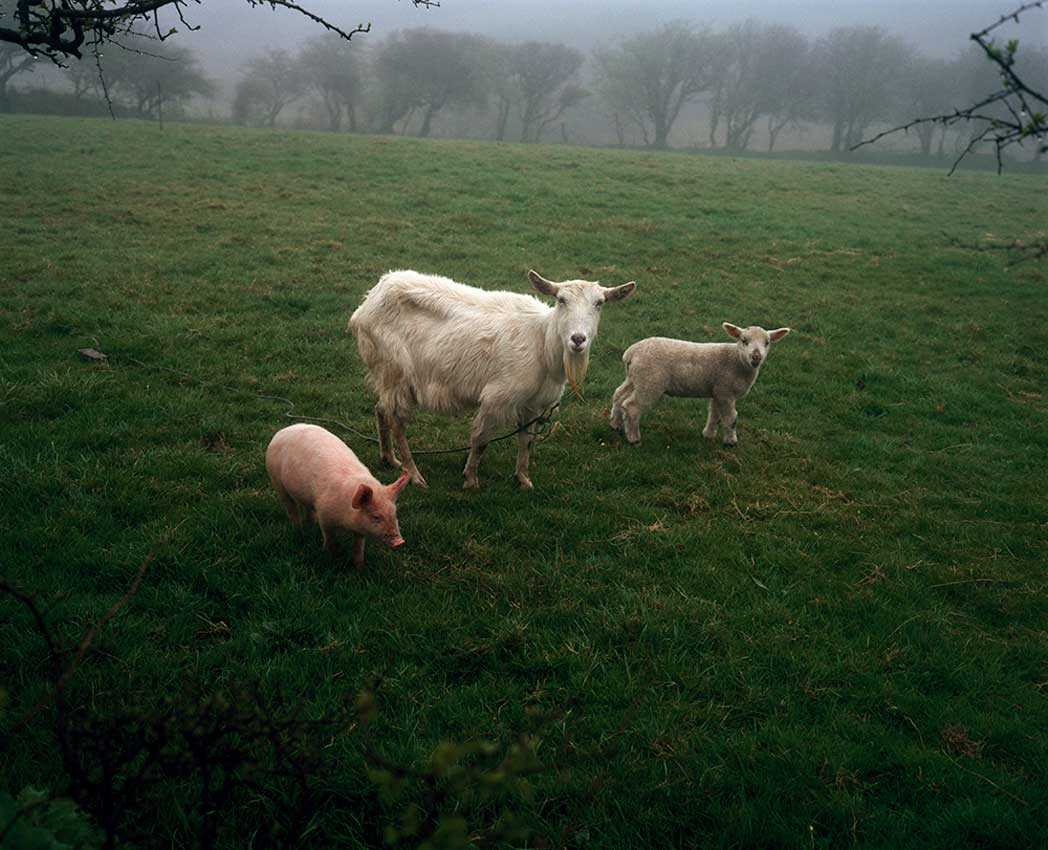
Jem Southam, The Pig, the Lamb and the Goat, 1982-1994
Bristol during the 1980s hosted a new and burgeoning scene of colour photographers, including Paul Graham, Martin Parr, and Jem Southam. When Graham described his impetus to use colour, it centred around the conveyance of information. How could a series like Troubled Land, which documented the Troubles of Northern Ireland, be communicated to a viewer without the colours of the Irish Tricolour, or the orange of partisan graffiti, the red, white, and blue paint staining the road? Graham’s was a pragmatic approach to the medium. Parr saw colour as analogous to contemporary life, the inertia of commercialism, and often with the help of an especially powerful flash introduced a facet of satire into colour photography. Others, like Garry Fabian Miller, conceived of colour as an end in and of itself. Jem Southam, however, has more poetic motivations for his panchromacy. The mythology and nature of the English countryside is, for Southam, enrapt in its colour as much as its topography, cultures, and histories apparent on its surface and within its geography.
Colour was not fundamental to, for example, Fay Godwin’s monochromatic, pastoral photographic practice, and one imagines that England’s rural colour had little to do with her vision. Chris Killip omitted all colour from his rich oeuvre; the gaudi hues of punks’ hair and the deep reds of Tyneside bricks can be imagined by the viewer as probabilities rather than facts, as accidents rather than inherent properties of the referents of his photographs. Although Southam is the heir to this canon, his understanding of visuality could not be further from Godwin’s or Killip’s, entirely because of colour. There was no special technological innovation that brought young artists away from Godwin or Killip and spurred this new foray into colour within British photography in the 1980s. William Eggleston, Stephen Shore, Joel Meyerowitz, and Joel Sternfeld had all been exploring the possibilities of photographic panchromacy as early as the 1960s, and undoubtedly the photographers working out of Bristol (Parr, Graham, Southam) did look to these exploratory American examples of what can be teased out of colour. But it would be difficult to draw any analogy between those American colour works and Southam’s new use of the medium. The Red River, Southam’s first fully resolved body of colour work, responded to the still slight precedence of artistic colour photography by creating a project which was novel for its profound idiosyncrasy.
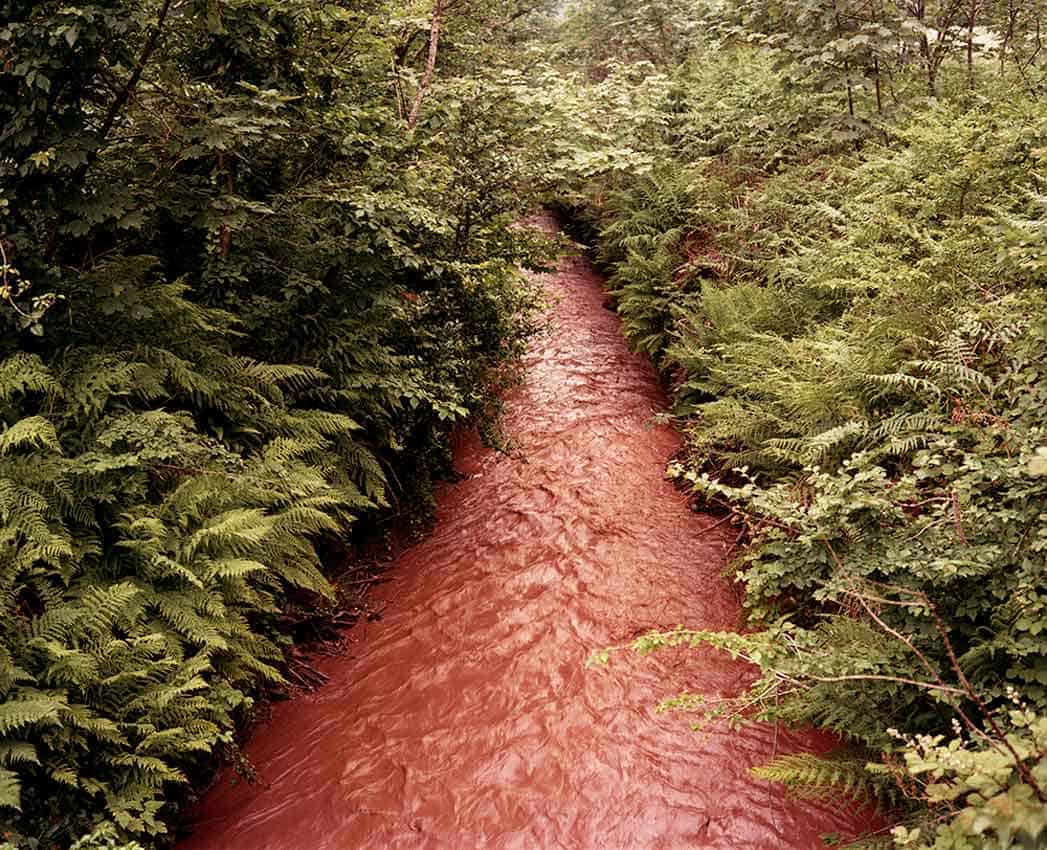
Jem Southam, The Stream at Menadarva, 1982-1994
Subtlety pervades throughout every hue in The Red River. ‘Restraint and delicacy, richness and depth’ appears to be a mantra recited by Southam as he made his pilgrimage up and down the river’s course. There’s a heavy weight to his colour, an earthiness congruous with the verses cited throughout the book of The Red River. Poetry was a deep influence on the series and informed the photographer’s artistic conception of the English countryside. How indeed could Southam respond to the countryside in the way of those poets, whose verses rely on colour, without the use of colour film?
Up then, and if your soil is rich,
From the first months of the year let your stout oxen
Turn it over, and let the clods lie there
For the dusty summer to bake with ripening suns.
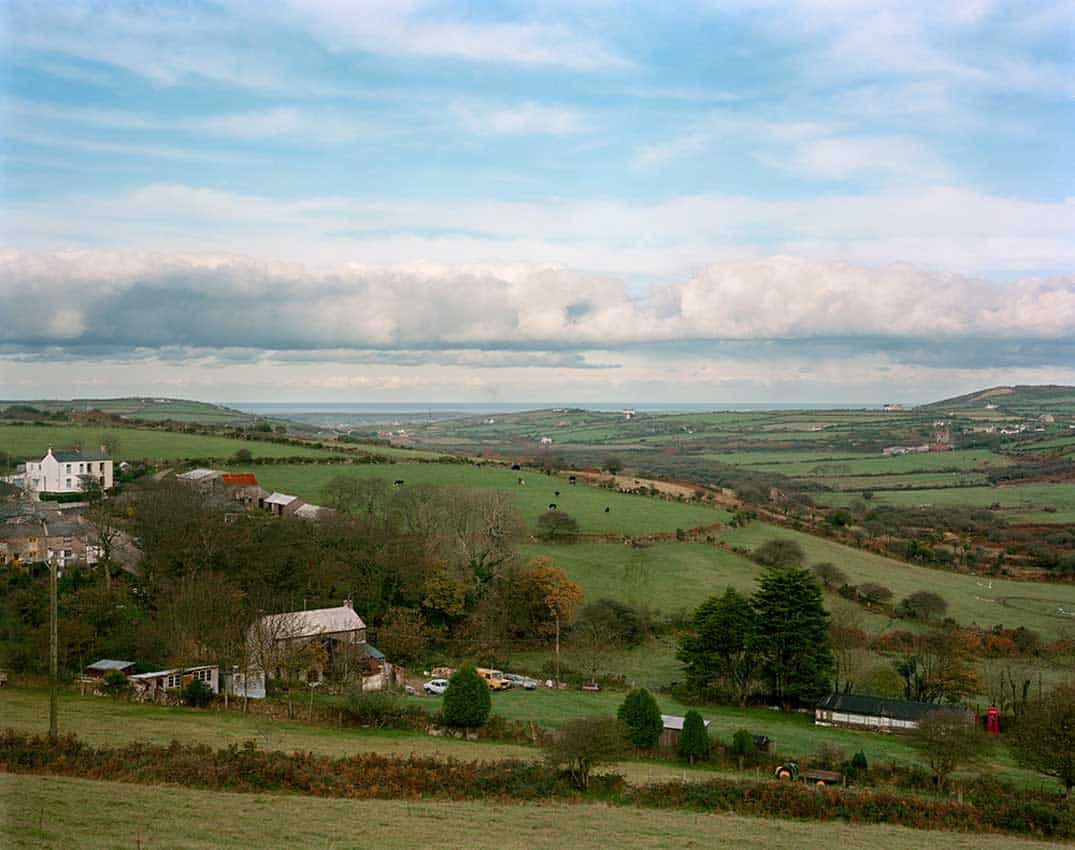
Jem Southam, Jobert Farm, Bolenowe, 1982-1994
It’s hard not to see the colouristic evocation of this verse from Virgil’s Georgics in the slumberous palette apparent in some of Southam’s images: deep browns complemented by sets of greens – which John Keats might have described as infused with a ‘verdurous gloom’ – closely express something of the nature of rural experiences. Or take as another example this verse by John Bunyan, while keeping in mind more apocalyptic photographs like Valley of the Barking Dogs, Old Mine, or Fortescue Shaft:
About the midst of this Valley, I perceived the
Mouth of Hell to be, and it stood also hard by
The wayside. And ever and anon the flame
And smoke would come out in such abundance,
With sparks and hideous noises.
Yet still the flames would be reaching towards him;
Also he heard doleful voices, rushing to and fro.
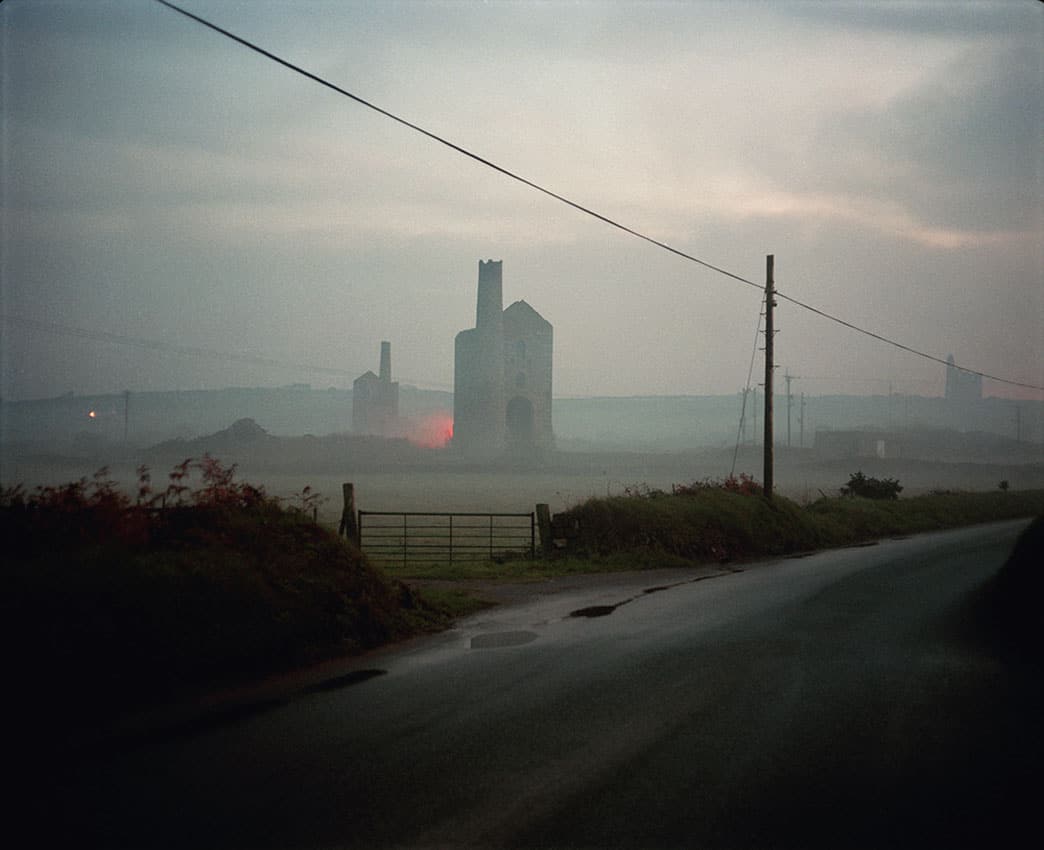
Jem Southam, Fortescue Shaft, The Great Flat Lode, 1982-1994
Lambent reds burning in the landscape cannot be communicated by either poet or photographer without some employment of technicolour vision. Indeed, it is red to which all returns in Southam’s series (as attested to by its very title), the colour becoming, in part, the focal point of the entire work. For without colour film, who would know that Southam was photographing a metaphor for the essence of Time, revealed in the crimson blood of the world sprung from a Cornish vein?
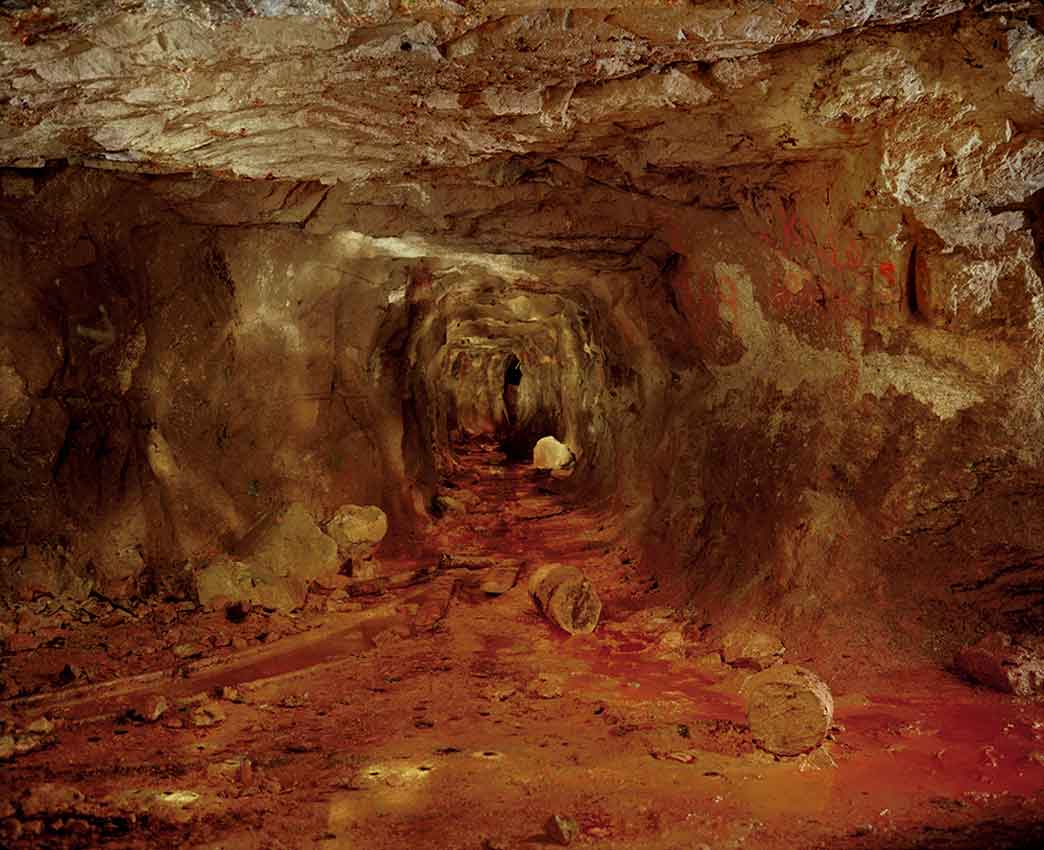
Jem Southam, Old Mine, 1982-1994
The constellation of British photographers working in colour in the 1980s all had their own motivations for exploring colour photography. Southam’s was deeply poetic and deeply personal, connected not to commercialism or to the communication of information, but rather to his ambition of creating, to borrow his own words, ‘profound and rich experiences, where one is immersed in the world… through time and space.’ Colour is indispensable to Southam’s sanguine, romantic vision of the valleys which he traverses, the mythologies wrought in his photographs, and the earth in which he is immersed.
(By Arlo Brown)
